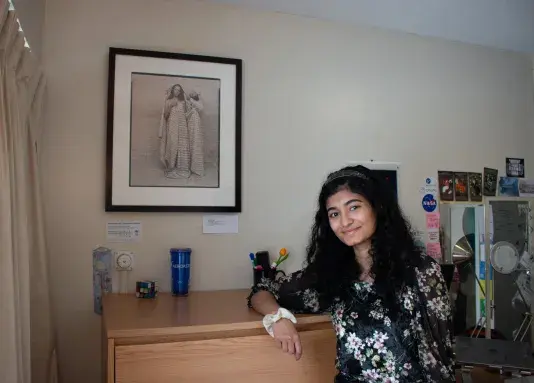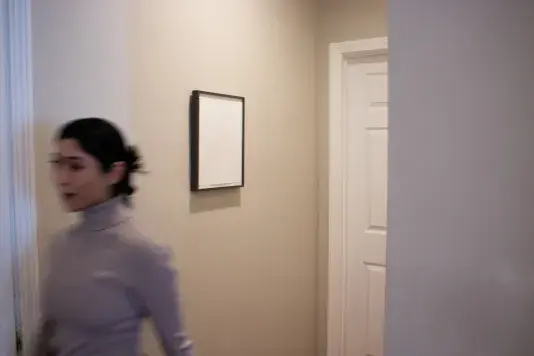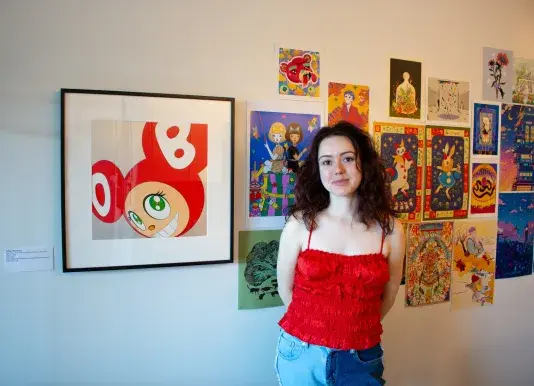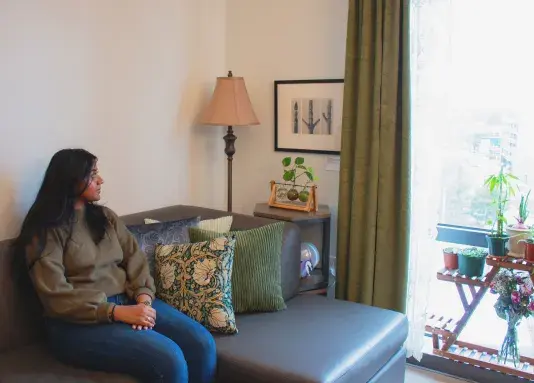What got you interested in the Student Lending Program?
I got to know about it in my second year and I found that it is so cool that we can borrow actual artwork from the List Center to keep it for a year, and that I can do this as a student here. So I was like, “Sign me up! I want to get in!” So when I got the piece last time and signed up again this year, I was lucky that I got picked for the first round. I came and looked at everything and I think this one really struck me. I thought to myself, “Wow, this piece here.” It’s what I wanted.
Can you walk us through how you chose your artwork?
I went in without knowing what I’d expect, but because I participated last year, I had an idea for the general collection that is part of the student lending program. I was looking around for something that connected with me and I saw this right as I was leaving. I saw that it had two women and it felt like the women were supporting each other. This piece struck me.
When I was picking it up, everyone working was so happy that a new acquisition got picked from the student lending program and I am happy to have it. It looks amazing. I came home and decided to research it because I was not sure what was happening in the artwork. Then I found that it is a group of pieces by the artist and all the calligraphy is handmade. I was so impressed that there is henna on the bodies of the subjects. All the fabrics are handmade, handprinted. I'm from India so henna is a big part of our culture. Although this piece is inspired by Moroccan culture, it feels like there is a common string between the two.
After participating in the Student Lending Art Program, how do you feel your relationship with art has changed or evolved?
Something interesting is after I got this artwork, I started looking into more art pieces. I got this app called DailyArt that gives me an art piece a day with information.



